La 10 facteurs qui ont un impact sur le coût des t-shirts personnalisés
Introduction:
Dans cet article, we’;Nous approfondirons les facteurs clés qui ont un impact sur le coût des t-shirts personnalisés..

La 10 facteurs qui ont un impact sur le coût des t-shirts personnalisés
Facteurs qui ont un impact sur le coût des t-shirts personnalisés
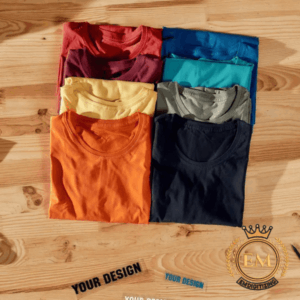
Les t-shirts personnalisés sont devenus un moyen populaire et polyvalent d'exprimer votre style personnel., promouvoir les entreprises, commémorer des événements, et beaucoup plus. Cependant, le coût du t-shirt personnalisé peut varier considérablement en fonction de divers facteurs. Comprendre ces facteurs est essentiel pour les particuliers et les entreprises qui cherchent à créer des t-shirts personnalisés à un prix adapté à leur budget tout en maintenant la qualité..
Quantité:
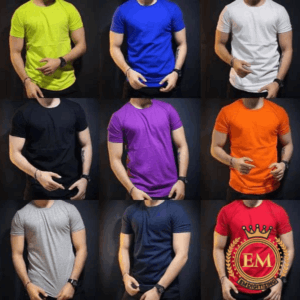
L'un des facteurs les plus importants affectant le coût des t-shirts personnalisés est la quantité que vous commandez.. Généralement, plus vous commandez de t-shirts, plus le coût unitaire est bas. En effet, une grande partie des coûts d'installation et de production sont répartis sur un plus grand nombre de chemises.. Les commandes groupées sont idéales pour les événements, cadeaux, ou les entreprises cherchant à fournir des uniformes à leur personnel.
Complexité de conception:
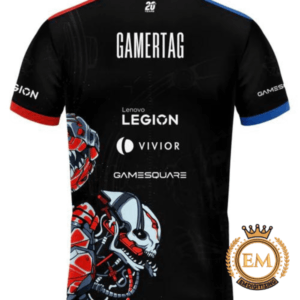
La complexité de votre conception de broderie joue un rôle dans la détermination du prix moyen des t-shirts. Les designs complexes avec plusieurs couleurs et détails complexes peuvent nécessiter plus de temps et d'efforts pour être imprimés., ce qui peut entraîner un prix de t-shirt personnalisé plus élevé. Les conceptions simples et minimalistes sont souvent plus rentables à produire.
Méthode d'impression:
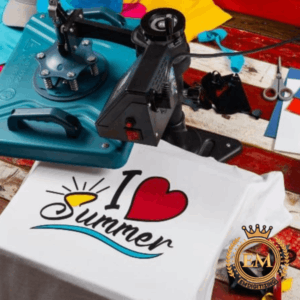
Le luminaire 3 Innov-ís XP3 est conçu pour gérer même les projets de couture et de broderie les plus exigeants. Avec sa vitesse de couture ultra-rapide, vous pouvez réaliser vos créations en un temps record sans faire de compromis sur la qualité.
Avancé Mon Centre de Conception:

Il existe différentes méthodes d'impression disponibles pour la liste de coûts des t-shirts personnalisés, chacun avec ses propres implications en termes de coûts. Les méthodes courantes incluent impression d'écran, directement sur le vêtement (DTG) impression, transfert de chaleur, et broderie. La sérigraphie est rentable pour les grandes quantités, tandis que l'impression DTG convient aux petites commandes avec des designs complexes.
Qualité du tissu:

Le type et la qualité du tissu que vous choisissez pour vos t-shirts peuvent avoir un impact sur le coût. Les tissus ou mélanges haut de gamme peuvent coûter plus cher que le coton standard. En outre, the fabric’;Le poids et la texture peuvent affecter le processus d'impression, entraînant des variations de coût.
Variations de couleur:
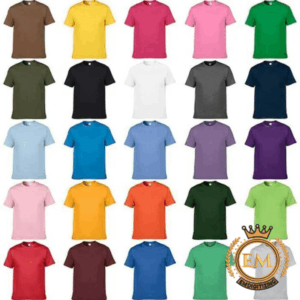
Le nombre de couleurs dans votre conception affecte le coût, car chaque couleur nécessite un processus d'impression distinct. Les designs avec moins de couleurs sont généralement plus économiques. Quelques méthodes d'impression, comme DTG, permettre des impressions en couleur sans affecter de manière significative le coût.
Personnalisations supplémentaires:
Des extras comme des étiquettes personnalisées, balises, manches, les poches, ou un emballage spécial peut contribuer au coût global. Ces fonctionnalités supplémentaires peuvent améliorer la valeur perçue de vos t-shirts mais peuvent entraîner une dépense supplémentaire..
Délais de commande: Les commandes urgentes ou la production précipitée peuvent entraîner un coût plus élevé en raison de la nécessité d'un traitement accéléré.. Planifier vos commandes à l'avance peut vous aider à éviter les frais urgents.
Fournisseur et emplacement:

Le choix du fournisseur de coût de votre t-shirt et son emplacement peuvent également influencer le coût.. Les fournisseurs locaux peuvent offrir des commodités mais peuvent avoir des structures de prix différentes de celles des fournisseurs internationaux..
Gamme de tailles: Offrir une large gamme de tailles peut avoir un impact sur les coûts, car chaque taille nécessite une configuration d'écran différente. Certains fournisseurs peuvent facturer un supplément pour les tailles plus grandes.
Considérations relatives au balisage et à la vente au détail: If you’;je prévois de vendre le prix du t-shirt personnalisé, tenez compte de facteurs tels que la marge bénéficiaire souhaitée et la concurrence sur le marché lors de la détermination du prix de détail. This may affect how much you’;êtes prêt à investir dans les coûts de production.
Lieu d'impression: L'emplacement géographique où l'impression est effectuée peut affecter les coûts en raison des variations de main d'œuvre., aérien, et les coûts de production dans différentes régions.
Placement de conception:
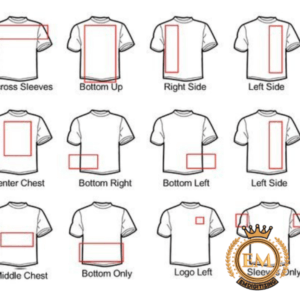
L'emplacement de votre design sur le t-shirt peut influencer la complexité de l'impression. Devant, dos, manches, ou les impressions intégrales peuvent nécessiter différentes techniques, affectant les prix.
Impression en masse vs. Sur demande:
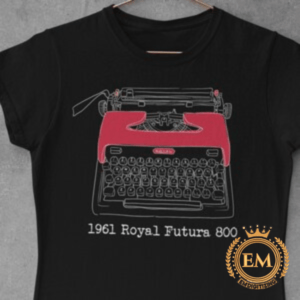
L'impression en masse permet de réaliser des économies par unité, mais l'impression à la demande permet de produire de petites quantités sans frais initiaux. Choisissez l'approche qui correspond à vos besoins.
Répéter les commandes:
Si vous envisagez de commander à nouveau le même modèle à l'avenir, certains fournisseurs peuvent offrir des réductions pour les répétitions entreprise de broderie.
Impression écologique:
Opter pour des méthodes d'impression respectueuses de l'environnement et des matériaux durables peut entraîner un coût initial légèrement plus élevé, mais peut correspondre à vos valeurs et à votre identité de marque..
Forfaits promotionnels
Certains fournisseurs proposent des offres groupées comprenant divers éléments tels que le coût des t-shirts personnalisés., Chapeaux, Et accessoires. Ces forfaits peuvent offrir des économies par rapport à la commande d'articles séparément.
Outils de conception en ligne:
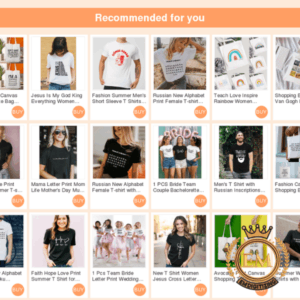
L'utilisation d'outils de conception en ligne fournis par les fournisseurs peut rationaliser le conception de broderie processus, reducing design costs if you’;je ne travaille pas avec un designer professionnel.
Style et coupe du t-shirt:
Différents styles de t-shirts, comme la coupe régulière, coupe slim, ou coupe athlétique, peut affecter les coûts. En outre, les styles spécialisés comme le col en V ou les manches raglan peuvent avoir des prix différents.
Lavabilité et durabilité:
Les techniques et les matériaux d'impression de meilleure qualité peuvent être plus durables., justifiant un coût plus élevé pour les t-shirts personnalisés qui conservent leur apparence après plusieurs lavages.
Étiquettes et tags personnalisés:
Adding custom labels or tags with your brand’;Le logo peut donner à vos t-shirts une touche unique mais peut augmenter le coût global..
Taille de la zone d'impression:
La taille de la zone d'impression peut affecter la quantité d'encre utilisée, ce qui peut avoir un impact sur les coûts. Les dessins plus grands ou les impressions intégrales peuvent nécessiter plus d'encre et des techniques spécialisées..
Techniques d'impression spécialisées:
Des méthodes comme l'impression par décharge, qui enlève la teinture du tissu pour une impression douce, ou les encres à base d'eau peuvent avoir des prix différents de ceux des méthodes traditionnelles.
Mélanges de matériaux et tissus spéciaux

Choisir des tissus spéciaux, tels que des mélanges avec des propriétés d'évacuation de l'humidité ou des textures uniques, peut impacter le coût par rapport au coton standard.
Collaboration et communication:
Communication claire avec votre fournisseur sur vos attentes en matière de conception, budget, et le calendrier peut vous aider à garantir que le coût final correspond à vos besoins.
Comprendre ces facteurs peut vous aider à prendre des décisions éclairées lors de la création de t-shirts personnalisés.. Gardez à l'esprit que chaque facteur joue un rôle dans le coût final, et trouver le bon équilibre entre qualité, motif, et le budget est la clé pour obtenir les meilleurs résultats pour votre projet.
Conseils à prendre en compte lors de la fabrication de t-shirts personnalisés
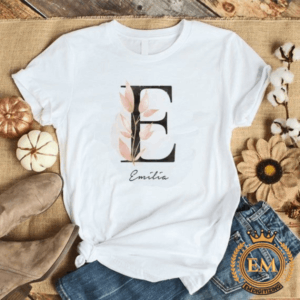
Voici quelques conseils à prendre en compte lors de la fabrication de t-shirts personnalisés:
- Comprenez clairement le but de vos t-shirts personnalisés. Sont-ils pour un événement spécial, cadeau promotionnel, or part of your brand’;la marchandise? Sachant cela aidera à guider les décisions de conception et de quantité.
- Determine how much you’;je suis prêt à dépenser par t-shirt. Considérez tous les coûts, y compris la conception, impression, et des extras comme des étiquettes ou des emballages.
- La qualité compte. Optez pour des tissus durables et des techniques d'impression qui garantissent que vos t-shirts conservent leur aspect après plusieurs lavages..
- Gardez votre conception propre et simple. Des détails complexes ou un trop grand nombre de couleurs peuvent faire grimper les coûts. Un design clair et percutant peut être tout aussi efficace.
- Les commandes groupées permettent souvent de réaliser des économies par unité. Cependant, si vous n'avez besoin que d'une petite quantité, explorer les options d'impression à la demande.
En gardant ces conseils à l'esprit, vous pouvez naviguer plus efficacement dans le processus de création de t-shirts personnalisés, garantir un résultat réussi et rentable pour votre projet.
Conclusion:
En conclusion, le coût des t-shirts personnalisés est influencé par une combinaison de facteurs, notamment la quantité, complexité de conception, méthode d'impression, qualité du tissu, variations de couleurs, personnalisations supplémentaires, délais de commande, choix du fournisseur, gamme de tailles, et considérations de vente au détail. Un examen attentif de ces facteurs vous aidera à trouver le bon équilibre entre coût et qualité., vous assurer que votre projet de t-shirt personnalisé est à la fois financièrement viable et visuellement attrayant.
Nous espérons que vous avez apprécié la lecture de cet article comme nous l'avons fait par écrit.
Si vous souhaitez personnaliser la numérisation du logo de broderie, EM DIGITIZING sera votre meilleur choix. À NUMÉRISATION EM, nous livrons le meilleur logo de broderie services de numérisation avec la meilleure qualité. Nous offrons 50% de réduction sur tous nos services à nos clients potentiels lors de leur première commande. Alors$£€¥789/456*123-0.=+_çàiopjkln,;:! ذ ضِ ئ, obtenez un devis gratuit maintenant et nous vous contacterons.
J'espère que cet article vous sera utile les gars!
Si vous avez des questions liées à cet article, n'hésitez pas à nous faire part de vos commentaires.. Et, Merci d'avoir lu!
Le coût des T-shirts personnalisés peut varier en fonction de facteurs tels que la quantité, conception de broderie complexité, méthode d'impression, et qualité du tissu. En moyenne, les T-shirts personnalisés de base peuvent varier de $10 à $25 par chemise, tandis que des conceptions plus complexes ou des matériaux de qualité supérieure peuvent augmenter le coût.
Oui, vendre des T-shirts personnalisés peut être rentable. En gérant soigneusement les coûts de production, stratégie de prix, et cibler le bon public, vous pouvez générer une marge bénéficiaire saine. Construire une marque forte et proposer des designs uniques peut également améliorer votre rentabilité..
La marge bénéficiaire sur les T-shirts personnalisés peut varier considérablement, mais une ligne directrice générale est de viser une marge bénéficiaire d'environ 50-60%. Cela signifie que si un T-shirt coûte $10 produire, tu devrais le fixer au prix $20 à $25 pour réaliser une marge rentable.
La quantité idéale de T-shirts à posséder dépend de vos besoins et préférences. Avoir une variété de T-shirts pour différentes occasions, modèles, et les saisons sont conseillées. Un point de départ raisonnable pourrait être autour 10 à 20 Tee-shirts, qui offre de la polyvalence sans surcharger votre garde-robe.
Lors de la tarification de vos T-shirts, prendre en compte des facteurs tels que les coûts de production, marge bénéficiaire souhaitée, concurrence sur le marché, et valeur perçue. Une approche courante consiste à calculer les coûts totaux (y compris les matériaux, impression, travail) puis appliquez une majoration qui correspond à vos objectifs de profit et à votre positionnement sur le marché..
